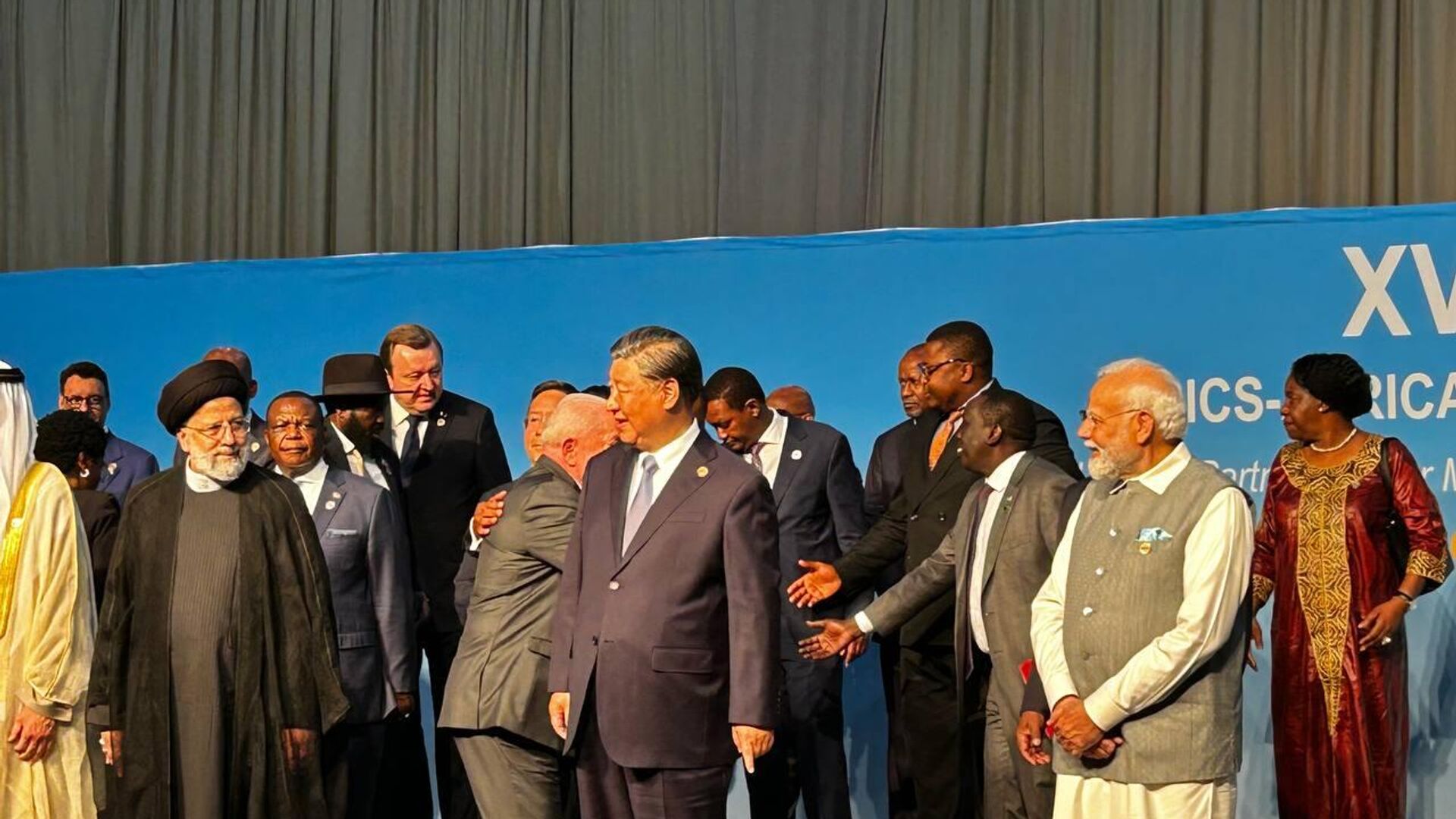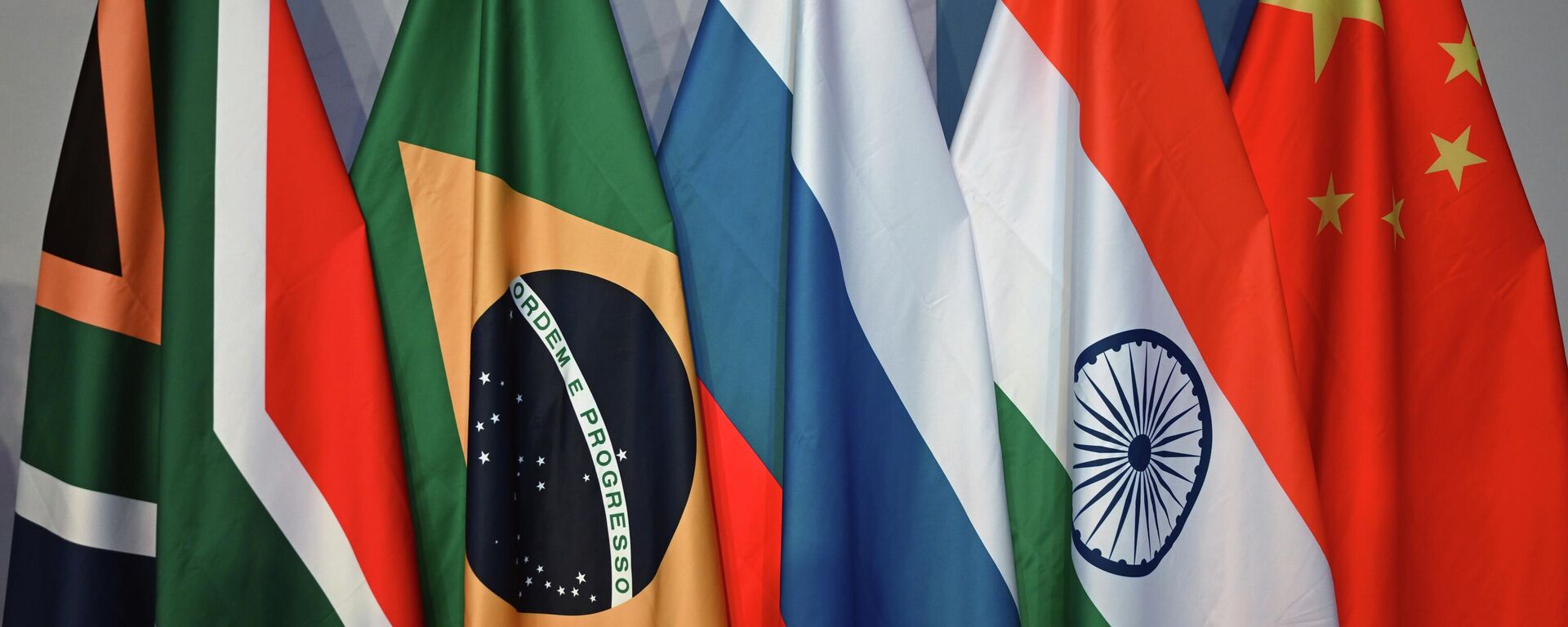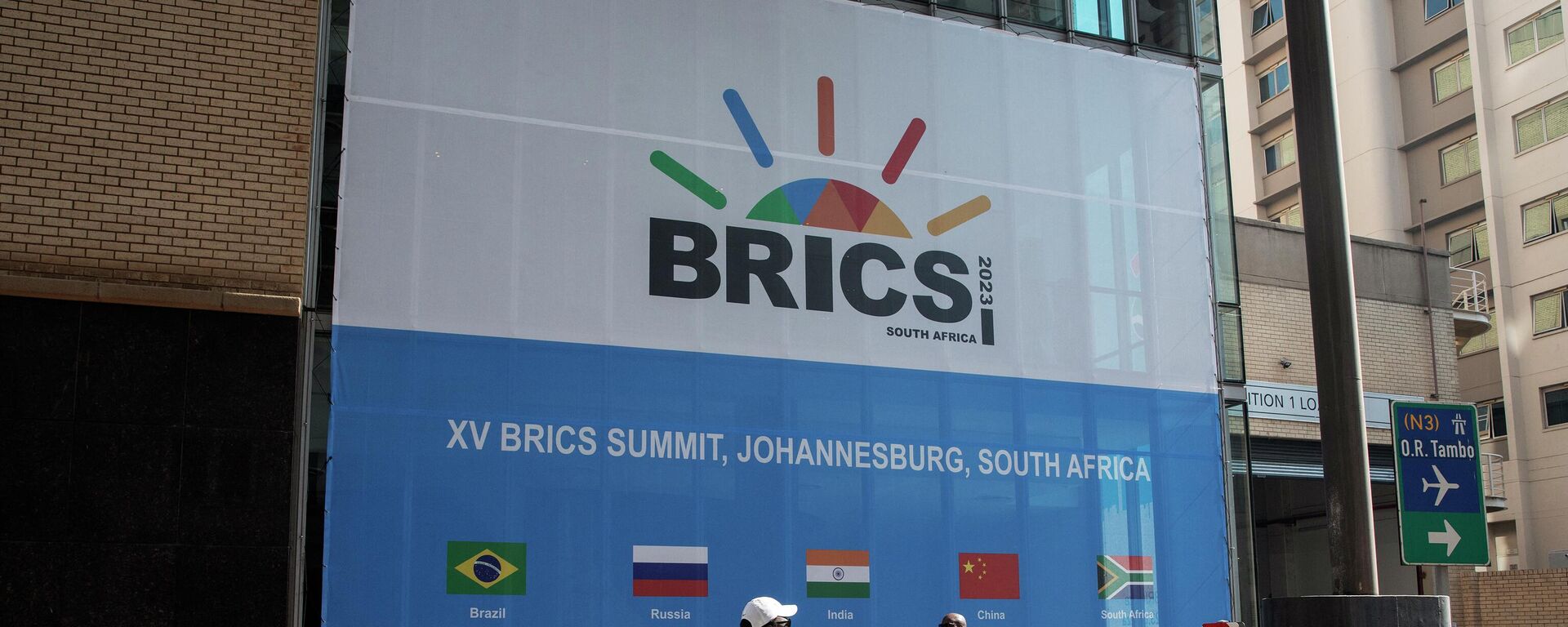https://en.sputniknews.africa/20230824/brics-extended-vs-g7-all-you-need-to-know-1061600650.html
BRICS Extended vs G7: All You Need to Know
BRICS Extended vs G7: All You Need to Know
Sputnik Africa
During the 15th BRICS Summit, it was announced that six nations – Argentina, Egypt, Ethiopia, Iran, the Saudi Arabia and UAE had been invited to join BRICS... 24.08.2023, Sputnik Africa
2023-08-24T19:22+0200
2023-08-24T19:22+0200
2023-08-25T11:34+0200
features
brics summit
brics expansion
brics
g7
economic growth
west
international monetary fund (imf)
population growth
https://cdn1.img.sputniknews.africa/img/07e7/08/18/1061608012_0:21:1280:741_1920x0_80_0_0_68f8e3510ac9702fbae2205aa354bde6.jpg
After their expansion, the BRICS are now 4 times more populated than the G7 and 2 times larger in terms of surface area. Their total GDP at purchasing power parity amounts to 37%, versus 29.9% for the Group of 7.With six new members, the BRICS (currently Brazil, Russia, India, China, South Africa) are gaining in power and weight on the international stage.When Argentina, Egypt, Iran, Saudi Arabia, Ethiopia and the United Arab Emirates officially join to the bloc in January 2024, it will represent 48.5 million square kilometers, or 36% of the world's surface area. In comparative, this is more than twice the size of the G7 (United States, United Kingdom, Germany, Italy, Canada, France, Japan).Additionally, in terms of population, the BRICS will be four times more populated than G7, with a total population of around 3.6 billion, or 45% of the world's population.BRICS will also account for 44.35% of the world's oil reserves.GDP higher than the G7The total GDP of the BRICS will represent 37% of that of the world in purchasing power parity terms, announced Brazilian President Luiz Inacio Lula da Silva at a press conference following the 15th BRICS summit.While the pre-enlargement GDP of the BRICS stood at 32.1% in 2023, the entry of new members will bring them 5% of world GDP, according to Sputnik's analysis of data from the International Monetary Fund (IMF). The total volume is expected to reach $65,000 billion. This compares with 29.9% for the G7 this year. In five years' time, this index should represent 38.6% of world GDP in purchasing power parity terms, while the Group of Seven will see it fall to 28%.In these new conditions, BRICS leaders have reason to believe that the time has come to use local currencies and alternative payment systems, said South African President Cyril Ramaphosa. The creation of a single currency was considered by Russian President Vladimir Putin to be one of the group's most important tasks.Production volumesThe BRICS account for almost half of the world's food production – in 2021, the wheat harvest in these 11 countries represented 49% of the global harvest (in the G7 – 19.1%) and rice – 55% (in the G7 countries – 2.6%).The BRICS also have an advantage in terms of their share of global production of metals important for high-tech: they account for 79% of aluminum production (G7 – 1.3%) and 77% of palladium production (6.9%). Moreover, after their expansion, the BRICS will account for 38.3% of all global industrial production (G7 – 30.5%), the advantage in terms of export share will remain with the Group of Seven – 28.8% versus 23.4%.The 15th BRICS Summit was the largest meeting of heads of state and government of the Global South in recent years. The invitees included the leaders of 54 African countries. The summit participants agreed that from January 1, 2024, Argentina, Egypt, Iran, the United Arab Emirates, Saudi Arabia and Ethiopia will join the association. A new list of possible members of the association will be prepared for the next summit.
https://en.sputniknews.africa/20230823/1061576906.html
https://en.sputniknews.africa/20230821/1061506517.html
west
Sputnik Africa
feedback@sputniknews.com
+74956456601
MIA „Rossiya Segodnya“
2023
Samantha Arias
https://cdn1.img.sputniknews.africa/img/07e7/0a/18/1063050346_115:0:834:719_100x100_80_0_0_1682778780537fd5aa8dd2536a012c1b.jpg
Samantha Arias
https://cdn1.img.sputniknews.africa/img/07e7/0a/18/1063050346_115:0:834:719_100x100_80_0_0_1682778780537fd5aa8dd2536a012c1b.jpg
News
en_EN
Sputnik Africa
feedback@sputniknews.com
+74956456601
MIA „Rossiya Segodnya“
Sputnik Africa
feedback@sputniknews.com
+74956456601
MIA „Rossiya Segodnya“
Samantha Arias
https://cdn1.img.sputniknews.africa/img/07e7/0a/18/1063050346_115:0:834:719_100x100_80_0_0_1682778780537fd5aa8dd2536a012c1b.jpg
brics summit, brics expansion, brics, g7, economic growth, west, international monetary fund (imf), population growth
brics summit, brics expansion, brics, g7, economic growth, west, international monetary fund (imf), population growth
BRICS Extended vs G7: All You Need to Know
19:22 24.08.2023 (Updated: 11:34 25.08.2023) Samantha Arias
Producer / Podcast host
During the 15th BRICS Summit, it was announced that six nations – Argentina, Egypt, Ethiopia, Iran, the Saudi Arabia and UAE had been invited to join BRICS. Sputnik takes a look at the main indices of the expanded BRICS, which continue to make their mark on the world.
After their expansion, the BRICS are now 4 times more populated than the G7 and 2 times larger in terms of surface area. Their total GDP at purchasing power parity amounts to 37%, versus 29.9% for the Group of 7.
With six
new members, the BRICS (currently Brazil, Russia, India, China, South Africa) are gaining in power and weight on the international stage.
When Argentina, Egypt, Iran, Saudi Arabia, Ethiopia and the United Arab Emirates officially join to the bloc in January 2024, it will represent 48.5 million square kilometers, or 36% of the world's surface area. In comparative, this is more than twice the size of the G7 (United States, United Kingdom, Germany, Italy, Canada, France, Japan).
Additionally, in terms of population, the BRICS will be four times more populated than G7, with a total population of around 3.6 billion, or 45% of the world's population.
BRICS will also account for 44.35% of the world's oil reserves.
The total GDP of the BRICS will represent 37% of that of the world in purchasing power parity terms, announced Brazilian President
Luiz Inacio Lula da Silva at a press conference following the 15th BRICS summit.
While the pre-enlargement GDP of the BRICS stood at 32.1% in 2023, the entry of new members will bring them 5% of world GDP, according to Sputnik's analysis of data from the International Monetary Fund (IMF).
The total volume is expected to reach $65,000 billion. This compares with 29.9% for the G7 this year. In five years' time, this index should represent 38.6% of world GDP in purchasing power parity terms, while the Group of Seven will see it fall to 28%.
In these new conditions, BRICS leaders have reason to believe that the time has come to use local currencies and alternative payment systems, said
South African President Cyril Ramaphosa. The creation of a single currency was considered by Russian President Vladimir Putin to be one of the group's most important tasks.
The BRICS account for almost half of the world's food production – in 2021, the wheat harvest in these 11 countries represented 49% of the global harvest (in the G7 – 19.1%) and rice – 55% (in the G7 countries – 2.6%).
The BRICS also have an
advantage in terms of their share of global production of metals important for high-tech: they account for 79% of aluminum production (G7 – 1.3%) and 77% of palladium production (6.9%).
Moreover, after their expansion, the BRICS will account for 38.3% of all global industrial production (G7 – 30.5%), the advantage in terms of export share will remain with the Group of Seven – 28.8% versus 23.4%.
The 15th BRICS Summit was the largest meeting of heads of state and government of the Global South in recent years. The invitees included the leaders of 54 African countries. The summit participants agreed that from January 1, 2024, Argentina, Egypt, Iran, the United Arab Emirates, Saudi Arabia and Ethiopia will join the association. A new list of possible members of the association will be prepared for the next summit.




